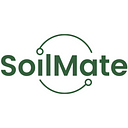Business Challenge
Our client is an organic corn fertilizer manufacturer.
His organic supplement is produced from the soybean (mainly from the production or consumption residues, like soybean meal), resulting in rich yields and high-quality products for many farms.
He is a small local manufacturer within Indiana, and now he wants to expand his market in the Upper Midwest of the United States. Therefore he needs to know about the market size and segmentation of the region, how to build the logistics in the initial stages of market penetration.
Since corn and soybeans are critical to our client, he needs to find out which of the nearest states produce these crops and in what quantities to build cost-effective supply chain management processes. So, before the market penetration, he needs to be provided with risk management and risk analysis to ensure an opportunity for long-term market growth.
Corn is an essential crop in Indiana and is a part of the top five agricultural products. To explore the market of corn near Indiana, we took neighboring states — Ohio and Illinois.
Solution Overview
SoilMate — is a cloud-based platform that delivers the ability to diverge Agricultural lands, detect each plot boundary and the crop specification on every selected territory. SoilMate analyzes larger areas, provides a deeper understanding of the land usage for every chosen region, and returns an accurate report based on artificial intelligence and mathematical approach.
To solve the client’s problem, we used image processing:
- automated optical inspection (AOI), image enhancement & restoration;
- image filtering, deconvolution, transformation, and alignment;
- segmentation, clustering & indexing, annotation;
- data labeling.
Technologies we used are:
- Big Data. Data storage creation for further processing with AI methods.
- Data Analytics. Usage of current and historical facts.
- Computer vision. Objects detection, tracking, and recognition using Machine Learning methods.
Project Description
Since many of our client’s customers owned vast fields sized from 1 square kilometer, the detection of the small areas was not so important. Still, the large-scale coverage was a high priority.
Our team proposed to use satellite imagery, which does not allow us to recognize the small fields (less than 10x10 m2); nevertheless, that imagery significantly reduced the costs, which was a beneficial solution for our client.
We mainly used Sentinel-2 imagery with Sentinel-1, which increased the accuracy, improved the quality of results, and allowed us to detect the crop type in the early stages of growth.
The recent researches highlight the high potential of Sentinel 1 imagery for crop monitoring.
The area of our client’s interest contains two regions in the state of Illinois and Ohio.
As the first step, we downloaded and pre-processing the imagery (calculated NDVI and NDMI, reduced data redundancy, eliminated undesirable characteristics, and merged the collection of rasters into a mosaic).
After imagery pre-processing, we used the mosaic and processed it with our plot boundaries and crop type detection models. Accurate field analysis helps to provide more precise information on crop species or crop yield calculation. In addition, our algorithms will help to discover historical changes in the areas over the years.
This data allowed us to gather information on the market volume.
We also used historical analysis to allow our client to view the stability and dynamics of the selected markets in the chosen regions.
After calculating the total soybean and corn manufacturing areas in Illinois and Ohio, we compared the results with the harvests of the previous few years.
For the last year, the production of corn in Illinois was 38% higher than in Ohio, and the production of soybean also was three times more.
In the images below, you can notice the result of our plot boundaries and crop detection algorithms.
The result
Our SoilMate Team delivered to the client a full crop map of the chosen states with an accuracy of 98 percent.
Consequently, the obtained data allowed us to define the state with the most developed crop production.
According to the result, our client chose Illinois as the most profitable state to distribute his production.
Since our client is a manufacturer of specific soybean-based fertilizers for corn, both species are necessary. Thus, the influential roles in decision-making were the low competition in producing this kind of supplement in Illinois and the opportunity to the rapid growth of manufacturing in the region due to the sufficient size of manufacturing both crops.
Also, due to the high level of the soybean market in Illinois, our client has a beneficial opportunity to expand his manufacturing in a new state.
